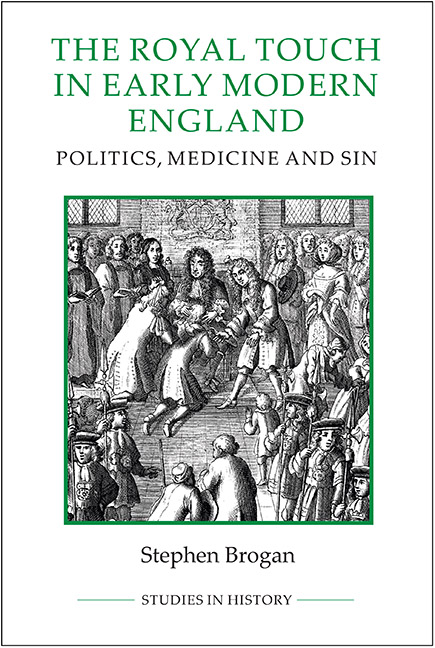Book contents
- Frontmatter
- Contents
- List of Illustrations
- List of Tables
- Dedication
- Acknowledgements
- Abbreviations
- Introduction
- 1 The origins and medieval history of the royal touch, 1000–1485
- 2 The Tudors: revival and reform of royal therapeutics, 1485–1603
- 3 The royal touch and the Stuart monarchy, 1603–1688
- 4 The ritual process of the royal touch, 1660–1688
- 5 The Restoration debate: the rise of ambivalence and scepticism, 1660–1688
- 6 The royal touch and the early English Enlightenment, 1689–1750
- Conclusion
- Bibliography
- Index
5 - The Restoration debate: the rise of ambivalence and scepticism, 1660–1688
Published online by Cambridge University Press: 17 June 2021
- Frontmatter
- Contents
- List of Illustrations
- List of Tables
- Dedication
- Acknowledgements
- Abbreviations
- Introduction
- 1 The origins and medieval history of the royal touch, 1000–1485
- 2 The Tudors: revival and reform of royal therapeutics, 1485–1603
- 3 The royal touch and the Stuart monarchy, 1603–1688
- 4 The ritual process of the royal touch, 1660–1688
- 5 The Restoration debate: the rise of ambivalence and scepticism, 1660–1688
- 6 The royal touch and the early English Enlightenment, 1689–1750
- Conclusion
- Bibliography
- Index
Summary
During the Restoration the Stuarts touched for scrofula on a vast scale, which partly explains why there is more evidence relating to the practice from this period than any other. This includes commentaries on the royal touch, which, although sometimes fragmentary, reveal a range of views – from belief to ambivalence to scepticism. It must be stressed that it was usual to believe in the efficacy of the royal touch, given the religious underpinnings of medicine, the sacral role of the sovereign, and the connection between people's individual health and that of the body politic. The increased scale and frequency of Stuart therapeutics only strengthens this view. Yet the royal touch was debated.
In fact, the royal touch must always have been discussed. The supplicants who turned to the crown wanted to be cured, meaning that the efficacy of the practice would surely have been assessed. Although the evidence of this debate prior to the seventeenth century is scarce, what survives is revealing. Three specific cases merit examination. In 1344 Thomas Bradwardine, chaplain to Edward III and future archbishop of Canterbury, wrote that the healings performed by the king were indeed scrutinised, being testified by ‘the sick persons who had been cured, by those present when the cures took place, or who had seen the results of them, by the people of many nations, and by their universal renown’. Turning to those who doubted miracles, he went on: ‘Christians, whoever thou art that dost discredit miracles still wrought in these very times … come into England to the present English king, bring with you any Christian who has the King's Evil no matter inveterate, how deep-seated and loathsome, and he will cure him in the name of Jesus Christ’.
By the end of Elizabeth I's reign critics of the royal touch objected to it on three grounds: that prayer had no intrinsic efficacy; cures might be wrought by wearing the gold Angel rather than the royal touch, which was problematic for Protestants as it was suggestive of magic; or cures might be caused by the power of suggestion. The Tudor debate was addressed briefly and frankly in 1584 by the MP Reginald Scot, in his sceptical book on witchcraft.
- Type
- Chapter
- Information
- The Royal Touch in Early Modern EnglandPolitics, Medicine and Sin, pp. 151 - 182Publisher: Boydell & BrewerPrint publication year: 2015



